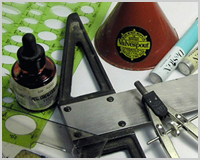 I’m old enough to remember working with Exacto blades and poisonous chemicals to create layouts for printing. I’m old enough to remember printing. I’m young enough to be considered an expert at computer programs, so there’s a bright side to this story and the memories are the truth…except I’m too old to be sure they are the correct memories, but not old enough to accidentally wear my underwear outside of my pants. Where was I? Oh, yes…the short and weird history of the days before computers were in every design studio, home, car, video game, and smart phone.
Fun fact: The computers in your cell phone and car are more powerful than the computers that were aboard Apollo 11. For the young out there, Apollo 11 was the space flight that landed on the moon in 1969…and it wasn’t fake…the moon is real!
When I first went to art school, a required course was Paste Up and Mechanicals. It was print production techniques. It took a steady hand, good eye, and the use of very toxic solvents and razor sharp cutting tools. The teachers, as with any production designer who had been in the business for more then ten years, had multiple scars on their hands from Exacto blade cuts and were criminally insane from the solvents soaking through the finger tips into their brains.
It started with a layout board. A pre-printed board with non-reproductive blue lines…which meant a stat camera wouldn’t see the lines when shooting Photostats. These were then pasted on more layout boards, to be shot again into film, that would be turned into a printing plate to print a magazine, poster, or flyer. Naturally, this process took about one thousand times longer than what we now do with simple strokes and keyboard commands on computers and are either digitally printed or go live in digital format onto the web.
I’m old enough to remember working with Exacto blades and poisonous chemicals to create layouts for printing. I’m old enough to remember printing. I’m young enough to be considered an expert at computer programs, so there’s a bright side to this story and the memories are the truth…except I’m too old to be sure they are the correct memories, but not old enough to accidentally wear my underwear outside of my pants. Where was I? Oh, yes…the short and weird history of the days before computers were in every design studio, home, car, video game, and smart phone.
Fun fact: The computers in your cell phone and car are more powerful than the computers that were aboard Apollo 11. For the young out there, Apollo 11 was the space flight that landed on the moon in 1969…and it wasn’t fake…the moon is real!
When I first went to art school, a required course was Paste Up and Mechanicals. It was print production techniques. It took a steady hand, good eye, and the use of very toxic solvents and razor sharp cutting tools. The teachers, as with any production designer who had been in the business for more then ten years, had multiple scars on their hands from Exacto blade cuts and were criminally insane from the solvents soaking through the finger tips into their brains.
It started with a layout board. A pre-printed board with non-reproductive blue lines…which meant a stat camera wouldn’t see the lines when shooting Photostats. These were then pasted on more layout boards, to be shot again into film, that would be turned into a printing plate to print a magazine, poster, or flyer. Naturally, this process took about one thousand times longer than what we now do with simple strokes and keyboard commands on computers and are either digitally printed or go live in digital format onto the web.
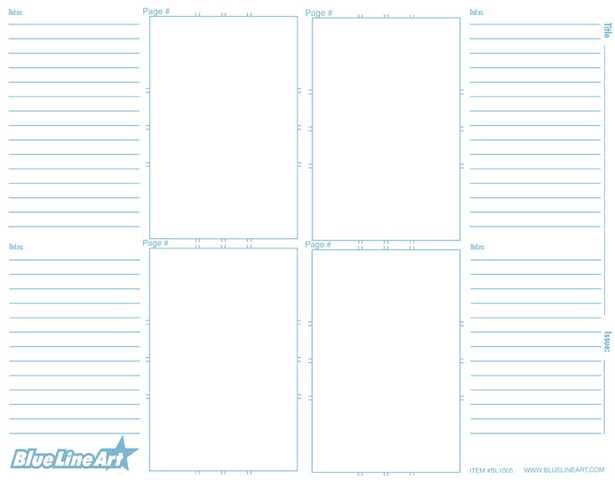 Non-repo blue lines gave designers guides to make straight lines and right angles...as long as the elements to be pasted down were just as straight and at 90 degree angles. That was the trick!
Non-repo blue lines gave designers guides to make straight lines and right angles...as long as the elements to be pasted down were just as straight and at 90 degree angles. That was the trick!
 Practice made perfect! Years of doing paste-ups made designers and production artists good...and usually criminally insane!
Once the layout board was firmly affixed to the drawing table using pieces of drafting tape—white tape that’s sticky enough to hold a piece of cardboard to a wooden or Formica surface but not sticky enough to tear the entire paper surface right down the middle when removing the tape—it was time to break out the toxic-but-fun chemicals and expensive Photostats.
Carefully using the T-square and triangle to make sure everything was cut just right, square and even using an Exacto blade, which is as sharp as a scalpel but can be lost in a carpet or fall into your pocket to discover later when reaching for change, it was time to start playing “design element collage” and “guess how many lines of type will fit on the page!”
Practice made perfect! Years of doing paste-ups made designers and production artists good...and usually criminally insane!
Once the layout board was firmly affixed to the drawing table using pieces of drafting tape—white tape that’s sticky enough to hold a piece of cardboard to a wooden or Formica surface but not sticky enough to tear the entire paper surface right down the middle when removing the tape—it was time to break out the toxic-but-fun chemicals and expensive Photostats.
Carefully using the T-square and triangle to make sure everything was cut just right, square and even using an Exacto blade, which is as sharp as a scalpel but can be lost in a carpet or fall into your pocket to discover later when reaching for change, it was time to start playing “design element collage” and “guess how many lines of type will fit on the page!”
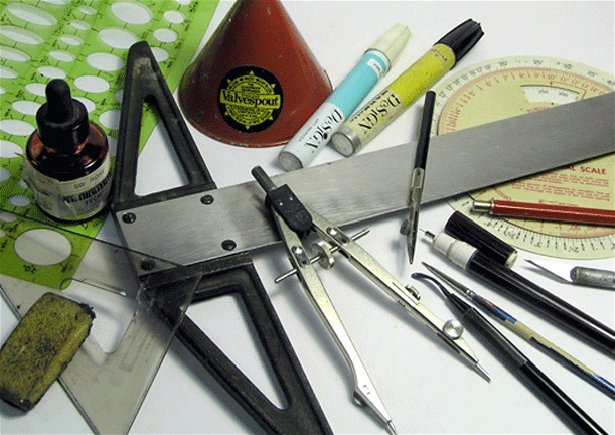 Some of the art supplies needed to be a designer. These supplies are still sold at art stores. I just can't figure out why?
Some of the art supplies needed to be a designer. These supplies are still sold at art stores. I just can't figure out why?
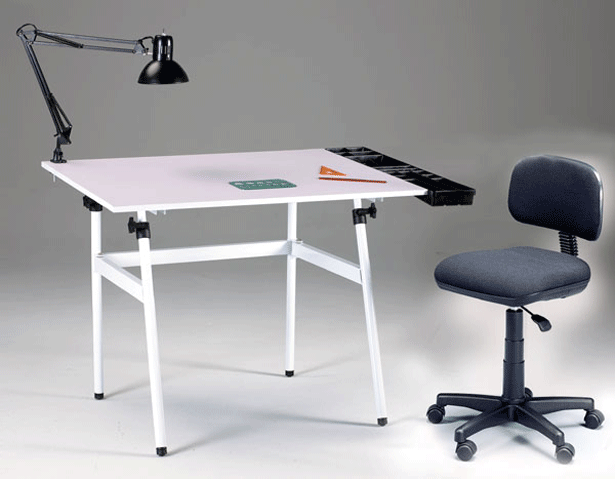 The trusty drawing table all designers had. The tilt of the table assured you that once you put down your Exacto knife, it would inevitably roll off and land, point down, in your thigh or foot.
By now you have used the handy proportion wheel to order Photostats or “stats” at the size needed and figured out how many lines will fit on a page using a mathematic solution akin to algebra or calculus or something else that would be assigned to the “Rain Man” in the department, and it was time to affix the pieces to the layout board.
The trusty drawing table all designers had. The tilt of the table assured you that once you put down your Exacto knife, it would inevitably roll off and land, point down, in your thigh or foot.
By now you have used the handy proportion wheel to order Photostats or “stats” at the size needed and figured out how many lines will fit on a page using a mathematic solution akin to algebra or calculus or something else that would be assigned to the “Rain Man” in the department, and it was time to affix the pieces to the layout board.
 An essential tool unless you wanted to do proportions and ratio math. You had to be exact when ordering photostats to the size you needed them or it would take an extra day to get another!
Taking your handy jar or rubber cement that has been carefully thinned with Bestine—a chemical solvent that is hazardous to breath in an unventilated area (like an art studio)—and you would coat the board and the backs of the stats and then have a cigarette at your desk while the cement dried. Yes, you could smoke in an office and yes, Bestine was highly flammable.
An essential tool unless you wanted to do proportions and ratio math. You had to be exact when ordering photostats to the size you needed them or it would take an extra day to get another!
Taking your handy jar or rubber cement that has been carefully thinned with Bestine—a chemical solvent that is hazardous to breath in an unventilated area (like an art studio)—and you would coat the board and the backs of the stats and then have a cigarette at your desk while the cement dried. Yes, you could smoke in an office and yes, Bestine was highly flammable.
 Rubber cement is a gooey, snot-like adhesive. We would put some on our drawing tables and once dry, roll them into fake boogers to hang from our noses. It seemed funny at the time but that's probably from being high due to the toxic fumes from the cement.
Rubber cement is a gooey, snot-like adhesive. We would put some on our drawing tables and once dry, roll them into fake boogers to hang from our noses. It seemed funny at the time but that's probably from being high due to the toxic fumes from the cement.
 The often mentioned Bestine! Make a mistake and just spray it all over the mechanical board. It softened the rubber cement and functional brain cells. The warning label filled the entire back of the one gallon can.
The often mentioned Bestine! Make a mistake and just spray it all over the mechanical board. It softened the rubber cement and functional brain cells. The warning label filled the entire back of the one gallon can.
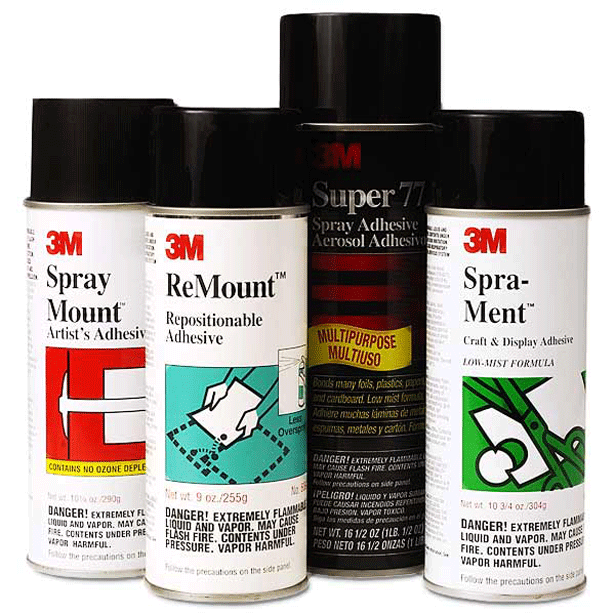 People still use aerosol spray mount. Use it in a spray booth—which will have stalactites forming all over the edges of the booth—which should tell you that you're breathing it in, too! The wheezing noise you make after a few weeks of using this product may alarm you. Smoke more and it will help melt the glue into your system.
People still use aerosol spray mount. Use it in a spray booth—which will have stalactites forming all over the edges of the booth—which should tell you that you're breathing it in, too! The wheezing noise you make after a few weeks of using this product may alarm you. Smoke more and it will help melt the glue into your system.
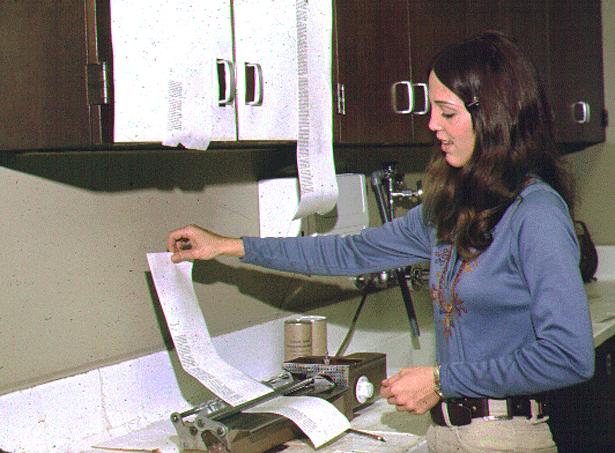 The "waxer" was a pleasure compared to the other adhesive methods. Run the stats through the machine and the back would be coated with a sticky hot wax. It was easy to place the stat on the layout board and it could even be moved without using Bestine. Aside from the hot wax burns on your hands and arms, the health benefits were outstanding!
Once everything was dried and you carefully removed the cigarette ashes from the cemented surface because black smudges would show up when the boards were shot for film, you would take each cut stat and place it ever so carefully down on the board. Oh! This piece is just a touch askew. Well, everything had to be exacting and perfect so you take your can of Bestine and spray it all over the stat and board, making sure it covers your exposed skin so it could soak into the membranes for definite brain cell and cancer damage later in life.
The "waxer" was a pleasure compared to the other adhesive methods. Run the stats through the machine and the back would be coated with a sticky hot wax. It was easy to place the stat on the layout board and it could even be moved without using Bestine. Aside from the hot wax burns on your hands and arms, the health benefits were outstanding!
Once everything was dried and you carefully removed the cigarette ashes from the cemented surface because black smudges would show up when the boards were shot for film, you would take each cut stat and place it ever so carefully down on the board. Oh! This piece is just a touch askew. Well, everything had to be exacting and perfect so you take your can of Bestine and spray it all over the stat and board, making sure it covers your exposed skin so it could soak into the membranes for definite brain cell and cancer damage later in life.
 This cover of Print magazine shows a layout board with the usual injury suffered by designers. Most of us looked upon the deep cuts as battle scars.
Carefully picking up the stat piece with a tweezer that is coated with dried rubber cement and cigarette ash, you then replace the piece on the board, praying it will be straight the second time. If you were a great paste up and mechanical person it would only take two tries…which meant other designers would get cancer and insanity quicker and you would WIN!
This cover of Print magazine shows a layout board with the usual injury suffered by designers. Most of us looked upon the deep cuts as battle scars.
Carefully picking up the stat piece with a tweezer that is coated with dried rubber cement and cigarette ash, you then replace the piece on the board, praying it will be straight the second time. If you were a great paste up and mechanical person it would only take two tries…which meant other designers would get cancer and insanity quicker and you would WIN!
 The rubber cement pickup was a small piece of rubber that I suspect was carved from the flesh of Gumby. Rub it over the entire paste-up and it would clean up all the rubber cement along the edges. The inset photo shows how a new pickup would look after one day.
The rubber cement pickup was a small piece of rubber that I suspect was carved from the flesh of Gumby. Rub it over the entire paste-up and it would clean up all the rubber cement along the edges. The inset photo shows how a new pickup would look after one day.
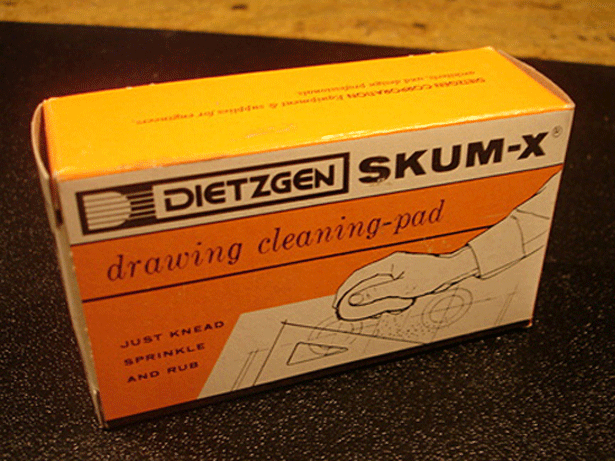 No one really knew what was inside but you'd squeeze the bag and let the mystery powdered substance fall all over the mechanical board and then rub the cloth bag over the surface to make it neat, toxic, and tidy.
Once the pages were pasted down, they were sent off to the pre-production house that would shoot them and create “bluelines.” These were literally blue, and then they would be proofread for a third time so editors could discover the mistakes they missed the first two times and the designers would have to cut out sections of the type galleys and replace them with the corrected type, once again using the toxic chemicals, cigarettes, and blood from cut arteries. Once approved for final film, there would be celebratory smoking and the pages would be shipped off to the printer for film—shortly thereafter followed by prayers that United Parcel Service or Federal Express wouldn’t lose the package and the entire process would have to be done again in one night.
Once film and color stats were produced, art directors would pour over the stats with loops (magnifying devices guaranteed to cause blindness when used for three or four years) and they would make calls of “20% less cyan and 5% less yellow” and then the printer would ignore those instructions and print the magazine or ad. All of this was then celebrated by screaming editors who hated the final colors and wondered why there were typos in the story. It was a magical time!
No one really knew what was inside but you'd squeeze the bag and let the mystery powdered substance fall all over the mechanical board and then rub the cloth bag over the surface to make it neat, toxic, and tidy.
Once the pages were pasted down, they were sent off to the pre-production house that would shoot them and create “bluelines.” These were literally blue, and then they would be proofread for a third time so editors could discover the mistakes they missed the first two times and the designers would have to cut out sections of the type galleys and replace them with the corrected type, once again using the toxic chemicals, cigarettes, and blood from cut arteries. Once approved for final film, there would be celebratory smoking and the pages would be shipped off to the printer for film—shortly thereafter followed by prayers that United Parcel Service or Federal Express wouldn’t lose the package and the entire process would have to be done again in one night.
Once film and color stats were produced, art directors would pour over the stats with loops (magnifying devices guaranteed to cause blindness when used for three or four years) and they would make calls of “20% less cyan and 5% less yellow” and then the printer would ignore those instructions and print the magazine or ad. All of this was then celebrated by screaming editors who hated the final colors and wondered why there were typos in the story. It was a magical time!
The long road
As computers moved into design departments, there were those of us who adopted them with wonder and excitement and those who kicked and fought and died off like the dinosaurs and Bestine victims. While the transition could have been seamless, in most cases it wasn’t. As art director at one publication, in the far-off distance of 1994, the art department still used layout boards. Although they had the latest power Macs (6100s, I seem to remember), they were used as typesetting devices and the printouts were pasted to the boards, sent out for bluelines and then shot for film. Images were Xeroxed and placed on the boards for position and size and the original art was photographed and stripped into the film. While I tried to convince the elderly editor that full digital production was possible, his answer was, he “liked the feel and weight of the boards in (his) hands.” “Yeah…like your *#%$!” I replied…or thought to myself. I really don’t remember after some years of using Bestine. After one particularly bad issue of original art being submitted to me at the wrong size, I stayed late, cloning extended space for the images to fit properly and then prepared digital files for half of the magazine. It was a gamble that would either lose my job or make for a wonderful evolution in our work process. When the magazine was published and we held our “debriefing” of how each page looked, the editor threw a tirade at how half the magazine looked like “crap.” I asked which half he didn’t like and as expected, it was the digital half he liked. The gamble worked out: instead of me being sooooo fired, as a compromise to the editor’s wish to hold something in his hands we agreed to affix printouts of the digital pages onto layout boards. The publisher was more then happy that over $2,000 per issue was saved by switching to full digital production. The staff was happy to be able to create the magazine issues in a fourth of the time it had taken using the old methods of production. The President of the publication was happy she could increase the number of issues we put out in a year without having to add staff. Oddly enough, right up to 2001, I ran across companies that were just adding computers to their art departments. Again there were those who couldn’t wait to start using the digital tools and those who refused and were gone. I suppose for those who refused to change, there was only one way to wield an Exacto knife but Photoshop would change every year or so.Was it the “good ol’ days?”
Despite the health hazards and rampant insanity, there were some great things about this whole “hands-on” process. When type was sent out for galleys, it signaled the end of the workday. Since type was due at the typesetter (which was a business across town as it wasn’t done in-house) by 7:00 pm, nothing else could be done after 6:00 pm and we went home. With computers setting type instantly, the 9-5 day became a 24-hour possibility most employers welcomed with glee and evil laughter. Editors didn’t understand the paste-up and mechanical page and seeing what went into it with all the smoking and such, they seldom if ever made changes to the layout design. With computers, editors, writers and janitorial staff feel they can ask to see what an image looks like blown up, shrunk down or moved left-right while they stand over the designer’s shoulder, usually drooling and breathing heavily. Although glue products were highly toxic, the fumes provided a legal and fun way to get high at work while bad memories were wiped from the brain cells that carried them. With computers, designers have to sneak off to the back stairwell to huff from paper bags to get high. Food stuck to layout boards was a hazard, so we were encouraged to take a lunch hour out of the office. Computers are impervious to most sandwiches and so we are seldom allowed to wander far from our desks, just in case of a fourth or twelfth design change from an editor or marketing person pops up in the middle of the day and they need to “see it for themselves.” Doing production by physical paste-ups required a steady hand and good eye to make sure everything was square, even, and clean of dirt and smudges for the best printing. Computers do that all for you so even a “Shaky-nerves” McGee can produce clean, straight lines and type. Nobody but designers understood how to do paste-ups and mechanicals, so we were considered demigods and walked the halls like untouched giants. Now that even four year-olds have computers with image software, everyone is a “designer” and we are just “overpaid crybabies.” The good news is: we know we are not “overpaid crybabies.” We are talented and adaptable, “underpaid and underappreciated professionals” who get to evolve with technology. Hold THAT in your hands, naysayers! For more scenes and fun facts from the days of killer art supplies, visit the Museum of Forgotten Art Supplies. Do you remember these tools and have your own stories of those days or are you young enough to be thankful for computers and are frightened by these instruments of torture?Speider Schneider
Speider Schneider is a former member of The Usual Gang of Idiots at MAD Magazine and has designed products for Disney/Pixar, Warner Bros., Harley-Davidson, ESPN, Mattel, DC and Marvel Comics, Cartoon Network and Nickelodeon among other notable companies. Speider is a former member of the board for the Graphic Artists Guild, co-chair of the GAG Professional Practices Committee and a former board member of the Society of Illustrators. Follow him on Twitter @speider or add him on Google+
Read Next
15 Best New Fonts, July 2024
Welcome to our monthly roundup of the best fonts we’ve found online in the last four weeks. This month, there are fewer…
By Ben Moss
20 Best New Websites, July 2024
Welcome to July’s round up of websites to inspire you. This month’s collection ranges from the most stripped-back…
Top 7 WordPress Plugins for 2024: Enhance Your Site's Performance
WordPress is a hands-down favorite of website designers and developers. Renowned for its flexibility and ease of use,…
By WDD Staff
Exciting New Tools for Designers, July 2024
Welcome to this July’s collection of tools, gathered from around the web over the past month. We hope you’ll find…
3 Essential Design Trends, July 2024
Add some summer sizzle to your design projects with trendy website elements. Learn what's trending and how to use these…
15 Best New Fonts, June 2024
Welcome to our roundup of the best new fonts we’ve found online in the last month. This month, there are notably fewer…
By Ben Moss
20 Best New Websites, June 2024
Arranging content in an easily accessible way is the backbone of any user-friendly website. A good website will present…
Exciting New Tools for Designers, June 2024
In this month’s roundup of the best tools for web designers and developers, we’ll explore a range of new and noteworthy…
3 Essential Design Trends, June 2024
Summer is off to a fun start with some highly dramatic website design trends showing up in projects. Let's dive in!
15 Best New Fonts, May 2024
In this month’s edition, there are lots of historically-inspired typefaces, more of the growing trend for French…
By Ben Moss
How to Reduce The Carbon Footprint of Your Website
On average, a web page produces 4.61 grams of CO2 for every page view; for whole sites, that amounts to hundreds of KG…
By Simon Sterne
20 Best New Websites, May 2024
Welcome to May’s compilation of the best sites on the web. This month we’re focused on color for younger humans,…














